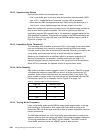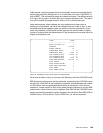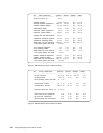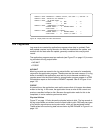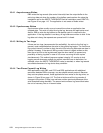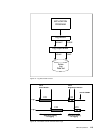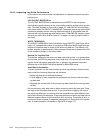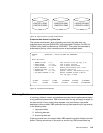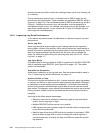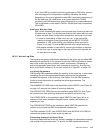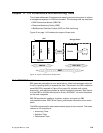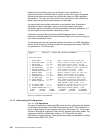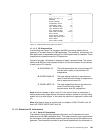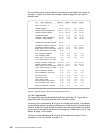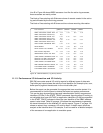116 Storage Management with DB2 for OS/390
records into the input buffer used by the reading process (such as a recovery job
or a rollback).
From a performance point of view, it is always best for DB2 to obtain the log
records from the output buffer. These accesses are reported by DB2 PM; see
F in
Figure 41 on page 118. The next fastest access for DB2 is the active log; see
G in
Figure 41. Access to the archive log is not desirable; it can be delayed for a
considerable length of time. For example, tape drives may not be available, or a
tape mount can be required. A zero value for
A in Figure 41 indicates that the
active logs are sized adequately.
10.5.1 Improving Log Read Performance
In this section we present some considerations on choices to improve log read
performance.
Active Log Size
Active logs should be large enough to avoid reading the archives, especially
during restart, rollback, and recovery. When data is backed out, performance is
optimal if the data is available from the output buffer or from the active log. If the
data is no longer available from the active log, the active log is probably too
small. For information about sizing the active log data sets, see 10.5.2, “Active
Log Size” on page 117.
Log Input Buffer
The default size for the input buffer is 60 KB. It is specified in the INPUT BUFFER
field of installation panel DSNTIPL (see Figure 40 on page 115). The default
value is recommended.
Avoid Device Contention
Avoid device contention on the log data sets. See the recommendation made in
10.4.5, “Improving Log Write Performance” on page 114.
Archive to Disk or Tape
If the archive log data set resides on disk, it can be shared by many log readers.
In contrast, an archive on tape cannot be shared among log readers. Although it
is always best to avoid reading archives altogether, if a process must read the
archive, that process is serialized with anyone else who must read the archive
tape volume. For example, every rollback that accesses the archive log must wait
for any previous rollback work that accesses the same archive tape volume to
complete.
Archiving to disk offers several advantages:
• Recovery times can be reduced by eliminating tape mounts and rewind
time for archive logs kept on tape.
• Multiple RECOVER utilities can be run in parallel.
• DB2 log data can span a greater length of time than what is currently kept
in your active log data sets.
• Need for tape drives during DB2 archive log creation is eliminated. If DB2
needs to obtain a tape drive on which to create the archive logs and it
cannot allocate one, all activity will stop until DB2 can create the archive
log data sets.



